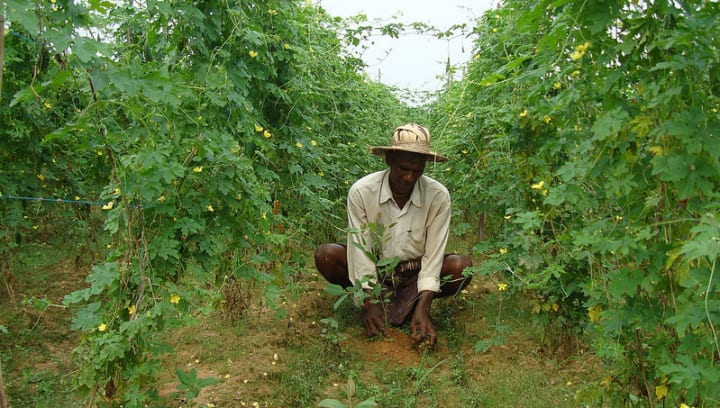
Emerging evidence indicates that, at roughly 1 billion hectares of land coverage worldwide, agroforestry offers a tremendous opportunity to store carbon — up to 34.2 petagrams of carbon — the equivalent of holding 20 years of emissions from deforestation in agroforestry systems worldwide.
Most governments recognize that agroforestry — the practice of integrating and managing trees on agricultural landscapes — holds great potential toward meeting their climate goals. What’s more, its widespread use and the familiarity of poor farmers with the practice makes agroforestry a potential low-hanging fruit for achieving climate change mitigation and adaptation goals, especially in developing countries. Indeed, a new study by the World Agroforestry Centre, released at COP23, of the nationally determined contributions, NDCs, of 22 countries found that 85 percent mention agroforestry as a key strategy in achieving their unconditional national contributions.
The report proposes several ways through which countries can tap the opportunity that agroforestry presents in achieving their NDCs and provides a series of recommendations for governments to help create an enabling environment for including agroforestry in agriculture policies and practices.
Agriculture accounts for almost 13 percent of global emissions, with the percentage on the rise due in large part to the use of chemical fertilizers and unsustainable land use practices in developing countries. Integrating trees on farmland reduces emissions as the carbon is soaked up by the trees as they grow. At the same time, trees provide nitrogen fixation and improve soil fertility which serves as a substitute for damaging chemical fertilizers. These and other agroforestry benefits, such as shade coverage, further enhance land productivity and present an opportunity to reduce emissions from deforestation. Further, increased land productivity may lead to a decrease in agricultural expansion. Agroforestry also helps reduce emissions from land degradation through the provision of on-farm timber and other tree products.
With improved tree management on farmland, particularly in deforested areas, scientists estimate that agroforestry can take up millions of tons of carbon, sufficient to fulfil the unconditional commitment of NDCs in 80 percent of the countries facing deforestation. Through agroforestry, a country such as Brazil could take up about 125 million tons of carbon while Indonesia’s tree coverage could absorb as much as 30 million tons of carbon.
Between 12 and 16 percent of the global population derives their livelihoods from agroforestry practices, yet there are few interventions that support this work while mitigating the resulting, human-made emissions.
Agroforestry systems have also been shown to adapt better to climate variability, thus improving production capacity. For instance, coffee agroforestry systems have revealed that crops grown under heavy shade are kept cooler and lose less water through soil evaporation and transpiration.
While the advantages of agroforestry are clear, there are policy and technological challenges that need to be overcome to enable agroforestry in NDCs. These challenges include tree tenure and carbon rights in some countries, the effects of climate change and variability on the growing niches of tree species and limited sources of quality germplasm.
Based on its findings, the ICRAF Policy Brief recommends the following for governments to integrate and maximize the impact of agroforestry in their NDCs:
Increase investments in tree planting material infrastructure and agroforestry knowledge systems to improve tree choices, quality and address high knowledge requirements.
Include innovative blended financing mechanisms — including blending mitigation and adaptation finance — to pave the way for the effective implementation of practices such agroforestry.
Devise policy instruments that clarify tree tenure and carbon rights, which are fundamental to motivate local actors to implement agroforestry within their routine agricultural activities which then contributes to achievements of the NDCs.
In addition, research should continue to provide technical guidance about the impacts of climate change on the growing niches of tree species that are part of the agroforestry system, and to produce quality germplasm that are adaptable to the local contexts and possible changes.
Drs. Peter Minang and Lalisa Duguma of ICRAF contributed to this article.




